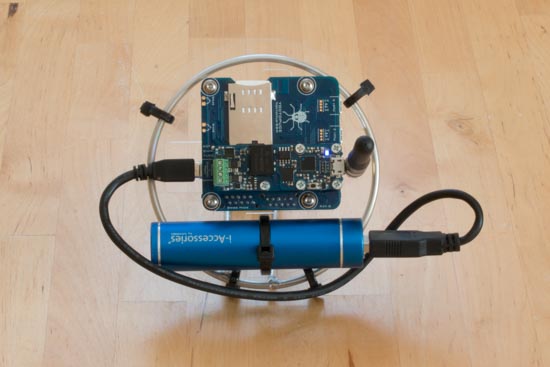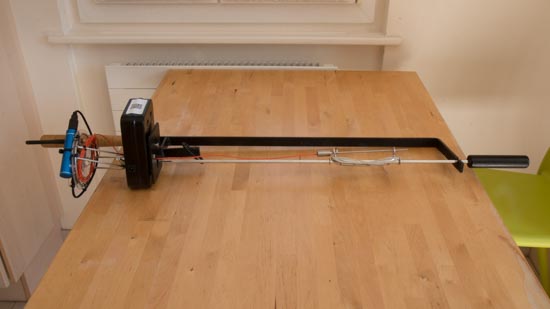![]() In the past weeks, we wrote many theoretical posts on serious topics, so this week, we wrote something more entertaining. We modified a barbecue to monitor the cooking of a spit roast. We also took this opportunity to use our new module: the YoctoHub-GSM-2G.
In the past weeks, we wrote many theoretical posts on serious topics, so this week, we wrote something more entertaining. We modified a barbecue to monitor the cooking of a spit roast. We also took this opportunity to use our new module: the YoctoHub-GSM-2G.
Measuring the temperature of a piece of meat in a kitchen oven is relatively easy: we have electricity not too far away, a wifi network, and the piece of meat doesn't move. On a spit, it's different. We don't necessarily have electricity or internet connectivity nearby, but above all, when you roast a large piece of meat, you use a spit! The meat is therefore rotating on an axle, very close to a very high temperature source. To measure the temperature changes with our modules, we must be cunning in order to keep the electronics far enough from the fire and to avoid the temperature probe winding up around the spit.
Let's start by solving the simple issues: network connectivity and power source.
To avoid being dependent on the wifi network, we used a YoctoHub-GSM-2G. It might seem somewhat of an overkill to use the phone network, and therefore a subscription with a provider. But at least, this project works everywhere! Even in your neighbors' garden :-) As power source, we used a USB battery. It's not expensive, you can find them everywhere, and it has enough autonomy to burn several roasts.

The Yocto-GSM-2G, the Yocto-PT100, and the USB battery on their support
To measure the meat temperature, we used a Yocto-PT100 because we had a PT100 probe of the right size and supporting high temperatures at hand. But you could very well use a Yocto-Thermocouple or a Yocto-Thermistor-C instead. These modules are largely accurate enough to monitor the cooking of a piece of meat. But be careful to select a probe that supports high temperatures, because the probe is going to be very close to the embers.

Make sure to select a probe which supports high temperatures
So, we have the temperature measuring electronics which is completely autonomous. We "only" have to fix all this on the spit without the probe winding up around the barbecue. We had the temperature probe wire run along the spit and we fixed the electronics at the end of it. In this way, the electronics is far enough from the fire to avoid being damaged, but it remains attached to the spit. The electronics rotates along with the spit and the meat. We must however modify the spit motor to run the temperature probe wire along the axle. As the electronics works on a battery and communicates by GSM, the is no other cable that could wind up.

The temperature probe wire runs along the spit and goes through the motor
We disassembled the spit drive motor and milled the main gear with a Dremel to make way for the PT100 wire. The method is rather primitive but, with some dexterity, you can make a relatively straight and deep enough groove for the cable to run along the spit.

The wire path is milled with a Dremel
The YoctoHub-GSM-2G, the Yocto-PT100, and the battery are assembled at the end of the spit on a small platform made of acrylic glass. To mount this platform on the spit, we used an accessory which is normally designed to hold a chicken on the spit.

The spit with the temperature measuring system
As a result, we have the whole measuring system which is mounted at the end of the spit and which therefore rotates along with the meat. Now, we only need to build the web page displaying the meat temperature.
For this part, we simply configured the HTTP callback of the YoctoHub-GSM-2G so that it posts on Emoncms the measures of the Yocto-PT100. Using Emoncms dashboard, we created a basic web page displaying the temperature in real time as well as a graph of the temperature over time. Configuring the YoctoHub-GSM-2G is very simple and has already been described in a previous post. This step doesn't require more than 15 minutes nor any code writing.

Emoncsm enables you to very easily create the graph
So that any guest can monitor the cooking on his or her phone, we printed and posted a QRCode with the web page URL.
Here is the result of our project:
For this post, we kept the electronics visible because it looks prettier, but in real life it would be wiser to protect everything in a waterproof enclosure, and to have a jack socket to easily unplug the temperature probe.


